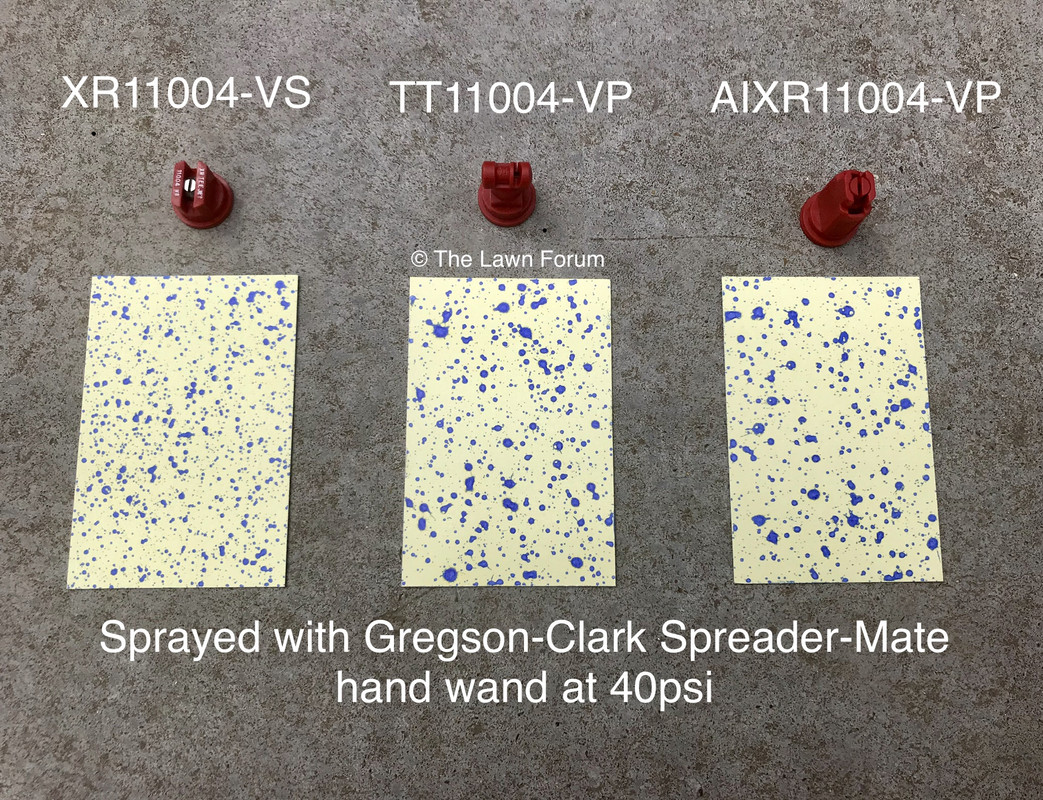Nozzle Color Selection:
Once I have selected a nozzle type, there are basically two main variables I consider when choosing a nozzle color:
1) Ground speed
2) Operating pressure
Changing either of those, along with nozzle color, will change your application rate. To decide on an application rate, you'll want to take into consideration things like:
1) Product-specific dilution requirements
2) Size of the area being sprayed
3) Sprayer tank capacity
4) Number of refills required
Example:
Let's say I'm wanting to use an
XR TeeJet and the product I'm spraying calls for a minimum of one gallon of carrier (water) per thousand square feet. I have a yellow (XR11002), a blue (XR11003), and a red (XR11004) on hand.
Rather than focus on one variable at a time, I use the chart and sort of massage my way into a solution. I know I naturally push my sprayer around 2.5 mph and the nozzle performs well at about 40psi, so I start by looking at the 40psi line for each of the three nozzles I have to see how many gallons per thousand square feet they will spray at 2.5 mph. This requires some minor interpolation, but I learn that under those conditions the yellow nozzle will give me about 0.56 gallons per thousand, the blue nozzle will give me about 0.84 gallons per thousand, and the red nozzle will give me about 1.16 gallons per thousand... so I would choose the red nozzle.
Alternatively, I could use the blue nozzle and either increase the system pressure to 60psi or reduce my walking speed to around 2 mph to get above the one gallon per thousand requirement. The yellow nozzle is not a viable option in this example.






























